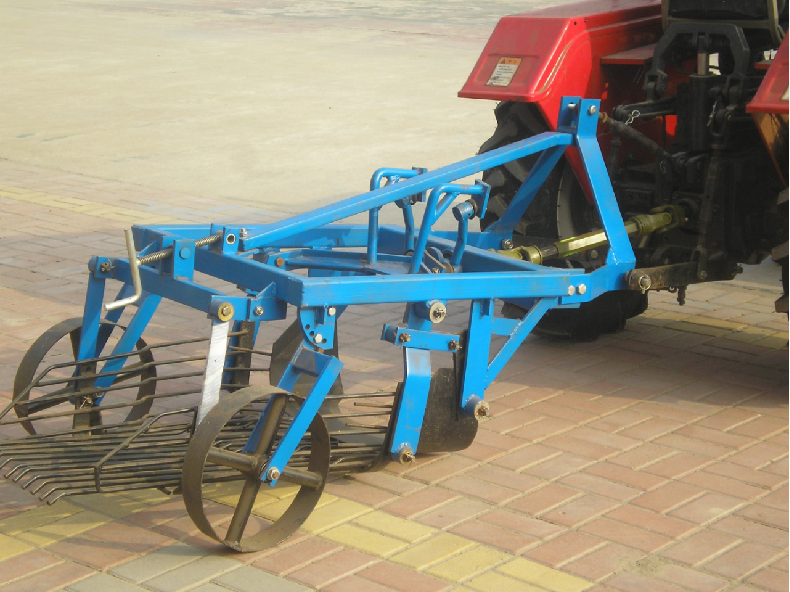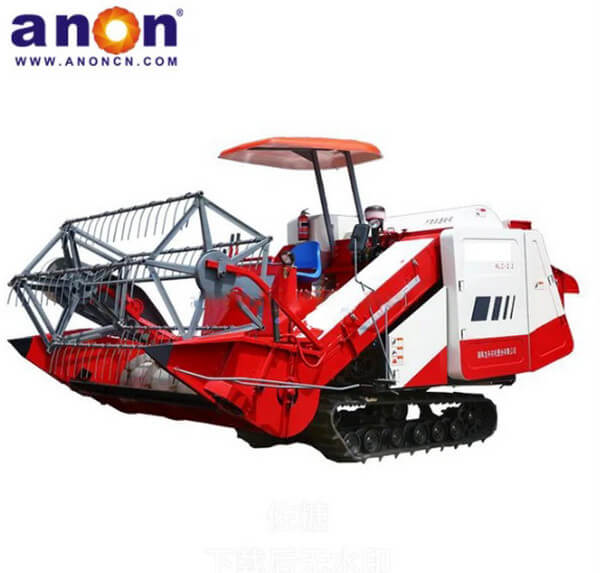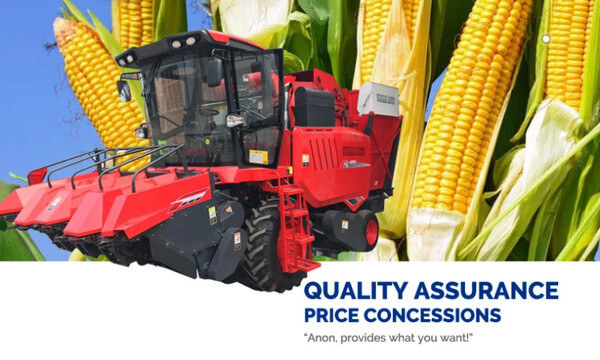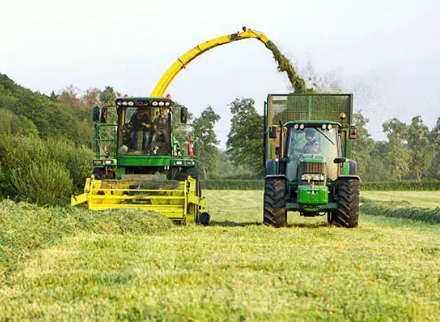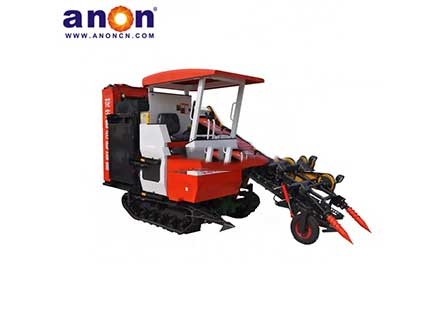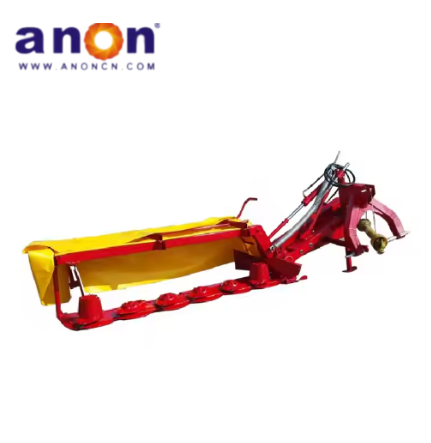Introduction
Harvesters are familiar to everyone. They are essential machinery in modern agricultural production and can help you efficiently complete crop harvesting operations. Harvesters are a huge family, and today I will introduce to you one by one the types of harvesters available.
Main types of harvesters
Now, I’ll introduce the common types of harvesters. Harvesters are mostly classified by crop type, making it easier for you to choose the right machine for your crops.
Combine harvester
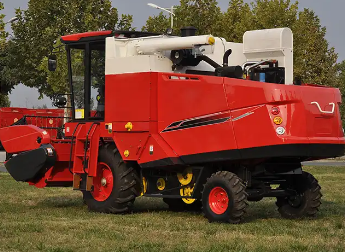
Combine harvester
First is the combine harvester. A combine harvester is a multifunctional agricultural machine that combines cutting, threshing, separating, cleaning, and grain collection in one operation. It helps you complete the field harvest of grain or seed crops in a single pass. You can use it to harvest crops like wheat, rice, corn, and soybeans, as well as non-grain crops such as flax and rapeseed. It is especially suitable for large-scale farms.
The harvesting process generally includes five steps: cutting, threshing, separating and cleaning, storing, and straw management.
First, the large cutting header at the front cuts the crop stems. The machine then feeds the cut plants into the threshing unit, where a rotating system separates the grain from the straw. The cleaned grain goes into the onboard grain tank and can later be unloaded into a truck or trailer for transport. The straw is either chopped and returned to the field or baled for use as feed or mulch.
Combine harvesters come in two types: full-feeding and half-feeding. A full-feeding combine sends the entire crop into the threshing unit, while a half-feeding combine only feeds in the grain head. Compared to half-feeding types, full-feeding combines have simpler structures, lower costs, easier maintenance, and generally higher harvesting efficiency due to multiple sieves.
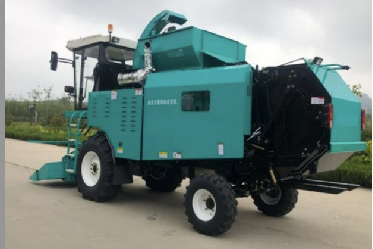
Forage harvester
A forage harvester is a type of agricultural machine used to harvest and process crops for silage. It mainly works with tall-stalk crops such as corn, sorghum, and forage grass, making it ideal for silage preparation.
During operation, the machine uses a header to cut the standing crops in the field. Then it chops the harvested crops into short pieces suitable for silage. A blower fan then throws the chopped material into a transport vehicle or storage unit.
Forage harvesters are commonly used in livestock farming to provide high-quality silage for animals like dairy cows, beef cattle, and sheep. The chopped stalks can also be used for biomass energy production or biogas generation.
Corn Harvester

Corn Harvester
A corn harvester is a specialized agricultural machine designed for harvesting corn efficiently. It can perform multiple tasks, such as ear picking, husking, and stalk processing, helping you greatly improve harvesting efficiency and reduce labor intensity.
The machine uses a header to guide the corn stalks into the ear-picking system. Inside, a set of counter-rotating spiral rollers pulls the ears off the stalks. The harvested ears are then transferred via a conveyor to the grain tank, while the stalks are chopped and returned to the field. The entire system runs on power from the tractor’s PTO (Power Take-Off), and operates through a combination of hydraulic and mechanical transmissions to ensure smooth coordination of all components.
Corn harvesters come in two main types: kernel corn harvesters and ear corn harvesters. A kernel corn harvester directly threshes the ears to separate and collect the kernels, skipping steps like ear picking, husking, and drying—making it more efficient. This type is ideal if your corn matures uniformly, has low grain moisture, or if natural drying conditions are favorable.
On the other hand, an ear corn harvester picks whole ears without threshing. These ears need to be dried, husked, and threshed afterward. This type is better suited for areas where corn ripens unevenly or where moisture levels are high and natural drying is limited.
Sugarcane Harvester
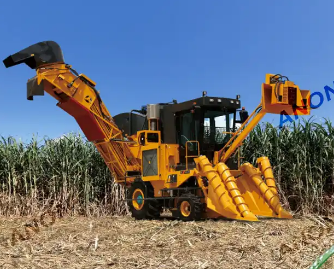
Sugarcane harvester
A sugarcane harvester is an agricultural machine designed for automated sugarcane harvesting. While operating in the field, the machine uses a divider to lift fallen cane and guide it toward the cutting system. The cutting system, equipped with high-speed rotating blades, cuts the sugarcane stalks at the base.
After cutting, the stalks enter a conveyor system, where primary and secondary trash blowers remove leaves and impurities. Then, the cleaned cane is delivered to a field transport vehicle via a conveyor arm. This arm, made up of a main and a secondary boom, can rotate horizontally around a turntable to adapt to various field conditions and unloading needs.
The machine is typically powered by a diesel engine, ensuring stable and reliable performance. Some models are also equipped with a leaf-stripping system that removes cane leaves during harvesting, reducing the need for post-harvest processing.
Using a sugarcane harvester significantly improves harvesting efficiency and reduces labor intensity. Its strong adaptability makes it suitable for different terrains, including flatlands, slopes, and muddy fields.
Cotton Harvester
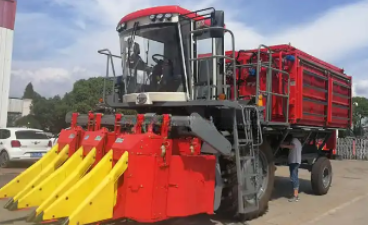
Cotton harvester
A cotton harvester is an agricultural machine designed for efficiently harvesting cotton.
The engine powers the cutting system to cut down cotton plants. Then, a conveyor belt moves the cotton to the picking chamber. Rotating drums with spindles pull the cotton from the bolls and wrap it around the spindles. When the spindles meet the doffing plate rotating in the opposite direction, the cotton falls off automatically. A blower then pushes the cotton into the storage basket.
Once the basket reaches a certain level, a built-in auger compresses the cotton into bundles. These bundles are either dropped onto the ground or transferred directly into a transport trailer. The control system monitors all components to ensure smooth and efficient operation.
With mechanical harvesting, farmers save time and labor. The machine also removes debris during the process, completing harvesting and cleaning in one pass.
Pepper harvester

Pepper harvester
A pepper harvester uses vibration or rotating drums to pick ripe chilies from the plants. The harvested chilies move through a conveyor system to the cleaning unit. The machine removes impurities and stores the cleaned chilies in a storage bin. At the same time, the suction system automatically separates stems and leaves. Meanwhile, stems and leaves are automatically separated by a suction system.
This automated harvesting process greatly outperforms manual labor in terms of efficiency. The harvester features flexible picking drums or spiral spring-tooth platforms to minimize damage to the peppers. It integrates multiple functions into a single operation—picking, conveying, cleaning, secondary sorting, bin collection, and unloading—making it a highly efficient tool for large-scale pepper harvesting.
Root Crop Harvester
A root crop harvester is a specialized agricultural machine designed for harvesting root crops such as potatoes, sugar beets, and cassava. It efficiently performs tasks like digging, separating, cleaning, and collecting, helping you boost harvesting efficiency while reducing labor intensity.
The harvester uses a digging mechanism to lift root crops from the soil. Then, a separation unit removes soil and debris. Finally, a conveyor system transports the cleaned crops into a storage bin or directly loads them onto a truck. At the heart of this machine is its soil-to-root separation technology, which uses vibrating screens, airflow, or mechanical agitators for effective sorting. The digging parts are made with flexible materials to minimize mechanical damage to the roots.
Peanut harvester
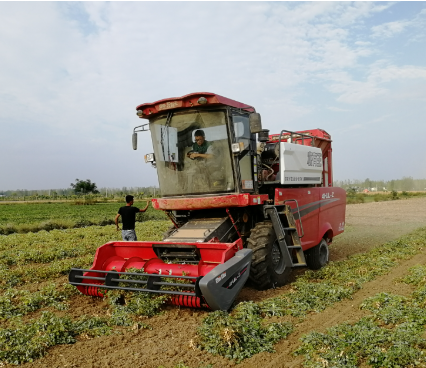
Peanut harvester
A peanut harvester is a specialized agricultural machine designed specifically for harvesting peanuts. It integrates multiple functions, including cutting, shelling, sorting, and collecting, which significantly improves both operational efficiency and harvest quality.
The harvester uses a front cutting unit to cut the peanut plants at the root. Then, a conveyor system transports the plants into the shelling unit, where the peanuts are separated from the stems. After shelling, the peanuts pass through a screening system to remove impurities before being collected in a storage bin. The remaining stems and plant materials are discharged from the rear of the machine.
Using a peanut harvester not only boosts harvest efficiency and quality but also helps reduce labor intensity.
Vegetable harvester
Finally, there is the vegetable harvester, a machine designed for the efficient and precise harvesting of vegetables, significantly improving harvest efficiency and reducing labor intensity. Examples include harvesters for leeks, garlic, and chives.
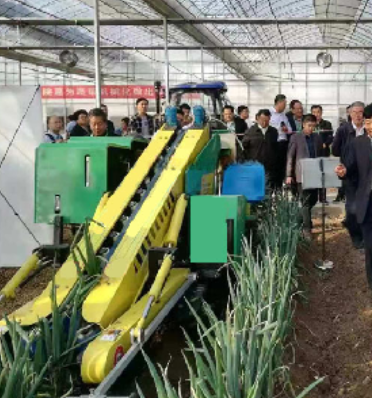
Leek harvester
A leek harvester uses automation technology for efficient, low-damage harvesting. Its core functions include precise cutting, automatic transportation, and soil cleaning. The leek harvester uses adjustable blades or contour-cutting devices that automatically adjust the cutting depth based on the plant’s height, ensuring the stems remain intact. Then, a vibrating screen or airflow system effectively separates the soil from the leeks, minimizing manual cleaning. Finally, the machine neatly arranges and packages the harvested leeks, making them ready for transportation.
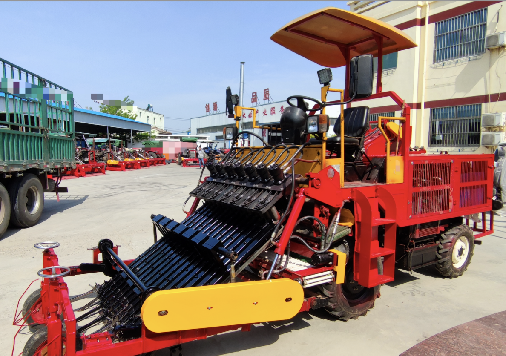
Garlic harvester
The garlic harvester is a modern agricultural machine for harvesting garlic. It integrates digging, soil removal, stem and leaf separation, root and stem sorting, and automatic collection into one system. Precisely adjusting the digging depth and soil removal intensity ensures low damage and high efficiency. A single unit can cover several acres in a day, significantly reducing labor intensity and cost while promoting large-scale, standardized garlic farming.
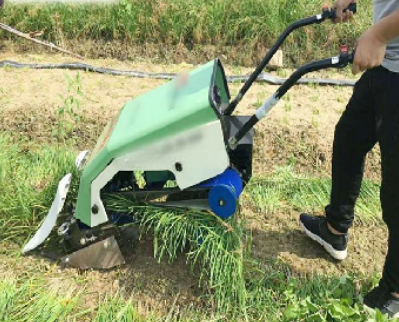
Chive harvester
The chive harvester operates with a mechanized design for high efficiency. Its key feature is the use of sharp blades to cut the chives precisely at the stem. The conveyor system collects the cut chives neatly. Some models automatically adjust the height to accommodate different planting row spacings, further improving harvesting efficiency and lowering labor costs. It is an essential tool for modern, large-scale chive farming.
According to the power drive and structure
Harvesters are not only classified by the type of crops they handle but also by their structure and power source.
Self-propelled Harvester
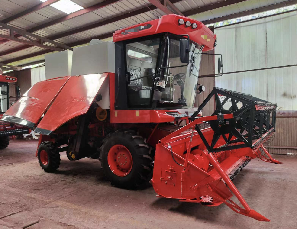
Wheeled harvesters

Crawler harvester
A self-propelled harvester is a type of harvester that has its own power and mobility system, meaning it doesn’t require external towing or suspension. It can complete the harvesting task independently. Self-propelled harvesters are divided into two types: wheeled and crawler. Wheeled harvesters are suitable for flat, hilly, or dry, hard ground, while crawler harvesters are ideal for muddy, soft, or sloped environments, such as rice fields.
Trailed Harvester
A towed harvester does not have its own power source and requires a tractor to provide power and tow. It has a simple structure and lower cost, making it suitable for large-scale operations.
Mounted Harvester
A mounted harvester is an agricultural machine that is installed on a tractor or other powered machinery using a suspension system. It efficiently harvests crops and also performs the important task of returning the straw to the field.
Walk-behind Harvester

Windrower
A walk-behind harvester is a small agricultural machine that the operator manually pushes while the engine drives the working parts. It is suitable for small fields or complex terrain, offering the advantages of being lightweight, flexible, and easy to operate. The engine drives the cutting mechanism, and after cutting, the conveyor system transports the harvested crops to the side or rear of the machine.
How to choose your harvester?
Consider your crop type
First, consider the type of crops you have. As we’ve introduced many different types of harvesters, selecting the right one based on your crop type is a smart and efficient approach. For example, for wheat and rice, it’s best to choose a full-feed combine harvester to ensure efficient threshing. And there are specialized harvesters designed specifically for crops like cotton and chili peppers.
Consider your land
Next, consider the size of your land and the terrain. If your land area is small, you might want to opt for a smaller harvester. For soft, muddy ground, a crawler harvester is a better choice as it helps prevent the machine from getting stuck.
Conclusion
With the information provided above, I believe you now have a good understanding of harvesters. And harvesters are also one of our main products, sold worldwide and receiving consistent praise from our customers. If you are looking for a suitable supplier, feel free to contact us!
FAQ
What is the average price of a combine harvester?
New combine harvesters can cost between $100,000 and $500,000. Used combines can cost less, but you need to make sure you are getting the same top quality. Typically, used combines cost between $100,000 and $150,000, but the exact price depends on the size, make, model, and age of the equipment.
What is the life expectancy of a combine harvester?
The economic life of a combine harvester stabilizes at 10 years when used 300 to 450 hours per year, and increases from 300 to 450 hours per year. As the average annual usage increases, the economic life of a combine harvester drops sharply after 500 hours of operation.
How many acres of land do you need to own a combine?
The size of your operation directly determines the equipment you need. Small farms (under 500 acres) can often benefit economically from a custom rental. Conversely, larger commercial farms over 1,500 acres are generally better suited to owning a combine due to its greater efficiency and lower labor costs.


